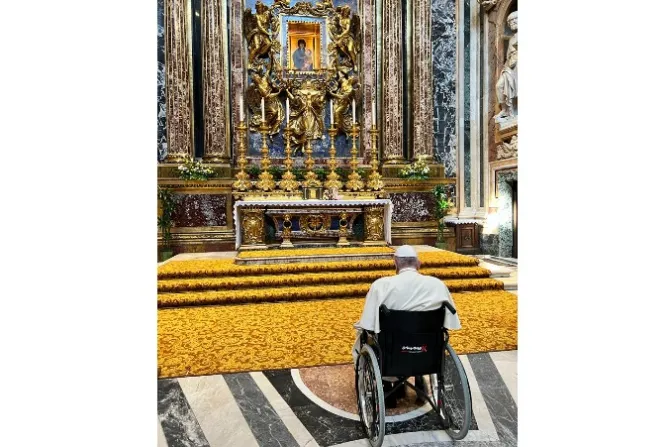It was a stark message, coming as it did just days before start of the much-feared and very hyped Synod on Synodality in Rome — a convocation of Catholic hierarchy, clerics, and other voices in convocation over the Church and tweaks and changes and postures toward matters such as female priests and blessing of gays or even same-sex “unions.”
While the Vatican already ruled against blessing unions themselves (February 22, 2021), and Francis warned two years ago about being bullied into “gender” politics, the concern remains that the Vatican will soften its approach, and on September 25, 2023, at Medjugorje, Our Lady hardly put the matter to rest, saying, “Dear children! I call you to a strong prayer. Modernism wants to enter your thoughts and rob you of the joy of prayer and the encounter with Jesus. Therefore, my dear little children, renew prayer in your families, so that my maternal Heart may be joyful as in the first days, when I chose you and when prayer resounded day and night – and heaven was not silent, but in this place of grace it gave peace and blessing in abundance.”
It was that word “modernism” that rang the tocsin.
In the Church, that relates to stripping altars of traditional art, conforming the liturgy to hip culture, and in general veering even slightly from the path of Catholicism, which dates back twenty centuries.
Francis himself is famous for visiting the tradition-bound Basilica of Saint Mary Major, praying before a picture of Mary and Child there, and instituted another picture depicting Our Lady Untier of Knots at St. Anne Church in the Vatican — a small church just emanating deep and ancient spirituality. At least as far as the ornate and devout nature of church buildings, the matter assured with the current Pontiff. Moreover, he signed off on that 2021 document, from the Congregation for the Doctrine of the Faith, that said a flat “negative” to the idea of blessing gay unions.
There has been a restriction on Latin Mass, however, and so one waits to see the outcome — if there is a discernible one — of the Synod, which has been largely pushed from the news by the crisis in Israel.
Meanwhile, in society in general, what is modernism?
Explains a “chat” source:
Modernism is a broad cultural, artistic, and intellectual movement that emerged in the late 19th and early 20th centuries, primarily in Europe and North America, though it had global implications and influences. The movement was a deliberate departure from traditional forms and an exploration of new narrative techniques and artistic expressions. While it encompassed a wide range of fields, from literature to architecture, some common themes and characteristics include:
- Rejection of Tradition: Modernists often rejected or critically re-evaluated the cultural and artistic conventions of the past. They sought to break away from established rules, forms, and traditions.
- Experimentation: Modernism is known for its innovative and experimental techniques, especially in the arts. In literature, for instance, stream of consciousness, non-linear narratives, and fragmented structures became popular.
- Abstraction: Especially in visual arts and architecture, there was a movement towards abstraction, where the representation wasn’t necessarily tied to the real or natural world.
- Reflection on Modern Life: Modernists frequently commented on and critiqued the conditions of modernity, such as urbanization, technological advancement, and the alienation of the individual.
- Emphasis on the Individual: Modernist works often prioritize individual subjectivity and inner experiences.
- Existential Overtones: There’s often a sense of disillusionment and existential concern in Modernist works, reflecting the uncertainties of the time.
- Impact of Technology and War: The tremendous technological advancements of the time and the horrors of World War I deeply impacted Modernist thinkers and artists. These events prompted reflection on the nature of humanity and the world.
Examples across disciplines:
- Literature: Authors like James Joyce (“Ulysses”), Virginia Woolf (“Mrs Dalloway”), and T.S. Eliot (“The Waste Land”) exemplify Modernist techniques and themes.
- Art: Pablo Picasso, Wassily Kandinsky, and Kazimir Malevich were among those who explored abstraction and new forms of artistic expression.
- Architecture: The Bauhaus school in Germany, led by figures like Walter Gropius, sought to combine form with function, emphasizing clean lines and lack of ornamentation.
- Music: Composers like Igor Stravinsky and Arnold Schoenberg introduced radical new styles and structures.
By the mid-20th century, modernism, it seems, began to give way to postmodernism — the state in which our confused society currently finds itself.
And so we wait.
Prayer is the answer indeed.
Online Retreat, Video: Spirituality and signs at a tumultuous time



